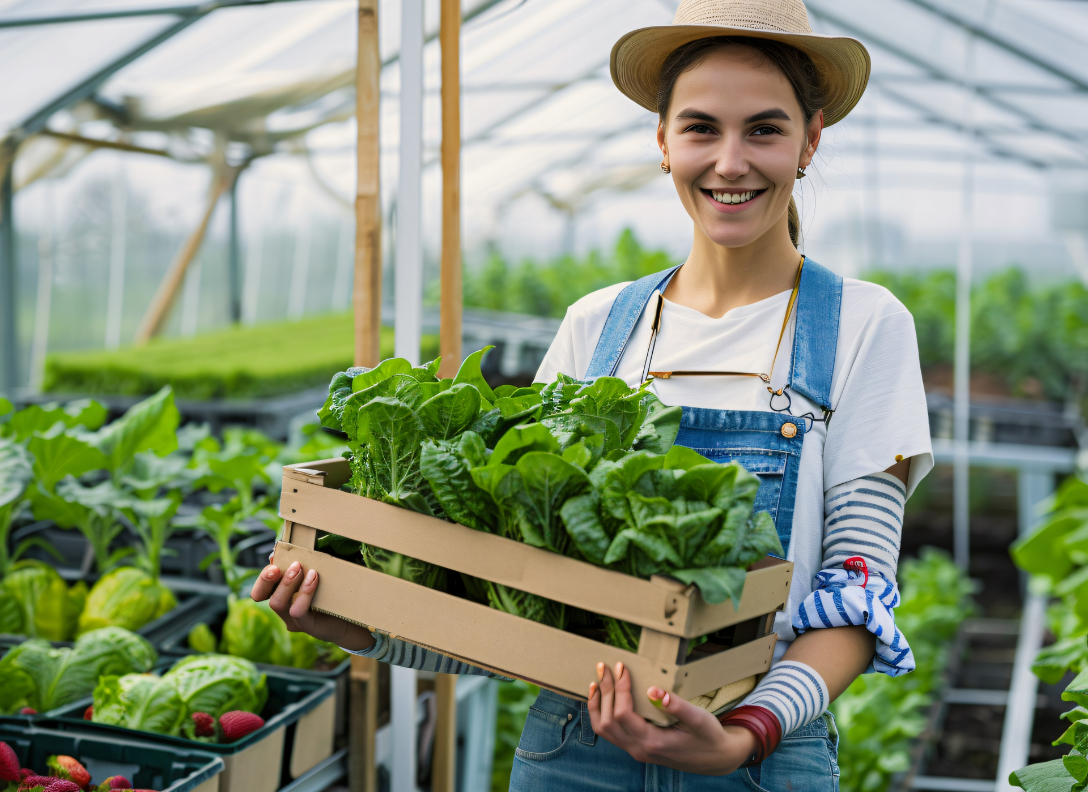Growing your own food at home is one of the most rewarding DIY projects you can take on. Not only do you get fresh, chemical-free produce, but you also save money, reduce food miles, and enjoy the satisfaction of eating something you grew yourself. But here’s the challenge: many beginners get discouraged because they choose vegetables that are too demanding. Crops like melons, cauliflower, or artichokes require specific soil, long growing seasons, or pest control strategies that frustrate first-time gardeners.
The secret to success is starting with the right vegetables. Some crops are naturally resilient, grow quickly, and bounce back from common mistakes like inconsistent watering. These are the “gateway vegetables” for new gardeners—the ones that guarantee early wins and build confidence.
Whether you have a large backyard, a balcony, or even just a sunny windowsill, you can grow an impressive harvest with minimal effort. In this guide, we’ll break down the easiest vegetables to grow at home, with full instructions on how to plant, care for, and harvest them. You’ll also learn about seasonal planting, regional variations, container gardening, pest solutions, and even how much money you can save compared to store-bought produce.
By the end, you’ll have a ready-made shopping list, a seasonal garden plan, and the confidence to start your first garden today.
Why Beginners Should Start Simple
Many new gardeners fail because they overwhelm themselves. Starting with easy-to-grow crops matters because:
- They germinate quickly, so you see results in days or weeks.
- They don’t require complicated soil amendments or fertilizers.
- They are resistant to common pests and diseases.
- They produce multiple harvests, so you get more food with less work.
- They can grow in containers, small raised beds, or even indoors.
Growing food is a skill. Just like cooking, it gets easier with practice. Easy vegetables give you the quick wins to stay motivated and move on to more complex crops later.
The Top 12 Easiest Vegetables to Grow at Home
Below are beginner-friendly vegetables, ranked for simplicity, yield, and flexibility.
1. Lettuce & Salad Greens
- Why it’s easy: Germinates in 7–10 days, grows in shallow soil, ready to harvest in a month.
- Container-friendly: Can grow in window boxes or pots as shallow as 6 inches.
- Care tips: Prefers cooler weather. Harvest outer leaves regularly to keep plants producing.
- Varieties: Loose-leaf lettuces like Romaine, Butterhead, or Mesclun mixes.
💡 Savings: One $2 seed packet can yield $30–$50 worth of lettuce.
2. Radishes
- Why it’s easy: One of the fastest vegetables—ready in 20–30 days.
- Pests: Very few.
- Best season: Spring and fall.
- Container-friendly: Shallow pots work well.
💡 Beginner tip: Plant every 2 weeks for continuous harvest.
3. Green Beans
- Why it’s easy: Germinates fast, produces heavily.
- Varieties: Bush beans (short, compact) or pole beans (climbing—great for small spaces).
- Harvest: 50–60 days.
- Tip: Harvest often—more picking = more beans.
💡 Yield: A single plant can produce 100+ beans.
4. Tomatoes (Cherry Varieties for Beginners)
- Why it’s easy: Hardy, productive, widely adaptable.
- Best for containers: Cherry or patio tomatoes.
- Care tips: Stake or cage for support; water consistently.
- Varieties: Sungold, Sweet 100, Tiny Tim.
💡 Note: Start with seedlings instead of seeds for faster success.
5. Carrots
- Why it’s easy: Low-maintenance, few pests.
- Soil needs: Loose and sandy for straight roots.
- Harvest: 60–75 days.
- Tip: Thin seedlings early to avoid crowding.
💡 Fun: Try purple or yellow varieties for kids.
6. Zucchini (Courgette)
- Why it’s easy: Almost guaranteed success.
- Yield: One plant can produce 10–15 lbs of zucchini in a season.
- Care tips: Needs space and sun; don’t overplant.
💡 Warning: Gardeners often regret planting too many zucchini plants!
7. Cucumbers
- Why it’s easy: Fast-growing climber with high yield.
- Container tip: Use a trellis to save space.
- Harvest: 50–70 days.
- Tip: Pick often while small for best flavor.
8. Peas
- Why it’s easy: Great for cool weather, climbs vertically.
- Harvest: 60–70 days.
- Soil benefits: Fix nitrogen, improving soil fertility.
💡 Kid-friendly: Sweet peas can be eaten straight from the vine.
9. Spinach
- Why it’s easy: Cold-hardy, grows fast.
- Harvest: 40–50 days.
- Care tips: Bolts in heat—grow in spring or fall.
10. Kale
- Why it’s easy: Pest-resistant, cold-tolerant, keeps producing when cut.
- Harvest: 50–60 days.
- Bonus: Survives frost, gets sweeter in cold weather.
11. Potatoes
- Why it’s easy: Just bury seed potatoes in soil and wait.
- Harvest: 80–100 days.
- Container tip: Grow in a large bag or bucket—just add soil as the plant grows.
12. Herbs (Bonus Pick)
- Basil, mint, parsley, and chives are nearly foolproof.
- Perfect for containers indoors.
- Provide continuous harvests.
Seasonal Planting Guide (Spring, Summer, Fall, Winter)
Spring: Radishes, peas, lettuce, spinach, carrots.
Summer: Tomatoes, cucumbers, zucchini, beans.
Fall: Kale, spinach, lettuce, carrots.
Winter (indoors): Herbs, lettuce, microgreens under grow lights.
How to Grow in Small Spaces
- Containers: 5-gallon buckets or grow bags.
- Balconies: Vertical trellises for beans and cucumbers.
- Windowsills: Herbs, lettuce, microgreens.
- Raised beds: Perfect for patios or driveways.
💡 Even a 4×4 foot raised bed can grow $200 worth of food in one season.
Pest & Disease Basics
- Aphids → Wash off with soapy water.
- Slugs/snails → Use beer traps.
- Powdery mildew → Water at soil level, not on leaves.
- Carrot fly → Use row covers.
Beginner Garden Layout
- Back row: Tomatoes + trellis.
- Side rows: Beans and cucumbers.
- Middle rows: Lettuce + radishes.
- Front edge: Spinach + herbs.
Cost Savings: How Much Can You Save?
- Lettuce: $2 seeds → $50 harvest.
- Zucchini: $3 plant → $60 harvest.
- Tomatoes: $4 plant → $40 harvest.
- Herbs: $2 plant → $20 per season.
👉 A small garden can pay for itself in one season.
Regional Tips (Cool vs. Warm Climates)
- Cool climates (Canada, Northern US): focus on peas, spinach, lettuce, radishes.
- Warm climates (Southern US): zucchini, cucumbers, tomatoes, beans.
- Tropics: Grow okra, sweet potatoes, heat-tolerant greens.
FAQs
Q1: What vegetables are the absolute easiest for total beginners?
If you’ve never grown a plant before, start with radishes, lettuce, and green beans. Radishes grow incredibly fast—sometimes ready to harvest in just three weeks. Lettuce is forgiving, grows in shallow soil, and keeps producing when you harvest outer leaves. Green beans are hardy, productive, and fun to pick. These three crops almost guarantee success, making them perfect confidence builders for new gardeners.
Q2: How much time does it really take to care for a small vegetable garden?
A common misconception is that gardening requires hours every day. In reality, a small garden (like a 4×4 raised bed or a few balcony containers) needs 15–30 minutes per day. Most of that time goes to watering, occasional weeding, and harvesting. Once a week, you might spend a little extra time pruning tomatoes or checking for pests, but gardening doesn’t have to be overwhelming. It’s closer to brushing your teeth—small, consistent effort adds up.
Q3: What vegetables grow fastest, so I can see results quickly?
Fast-growing crops give beginners the satisfaction of harvesting quickly. The top picks are:
- Radishes: 20–30 days.
- Lettuce: Baby leaves ready in 30 days.
- Spinach: Harvest in 40 days.
- Green onions: Harvest tops in 40–50 days.
Planting these ensures you see results within the first month of gardening. That “instant win” keeps motivation high.
Q4: Do I need special fertilizer or expensive soil?
Not at all. Many beginners overspend here. The best soil is rich in organic matter—a bag of compost mixed into regular garden soil works wonders. For container gardening, buy a quality potting mix, not heavy garden soil, since it drains better. Fertilizer should be simple: an all-purpose organic fertilizer (like 10-10-10 NPK) or even homemade compost tea provides enough nutrition for most easy crops.
Q5: Can I grow vegetables indoors if I don’t have outdoor space?
Yes! Indoor gardening is absolutely possible, especially with leafy greens and herbs. All you need is a sunny windowsill or, for best results, an LED grow light. Lettuce, spinach, basil, parsley, and even small cherry tomato plants can thrive indoors. Microgreens are another great option—they grow in trays and are ready in just 10–14 days.
Q6: How much money can I realistically save by growing vegetables at home?
This depends on what you grow. High-value crops like herbs, lettuce, and zucchini offer the biggest returns. For example:
- A $2 basil plant can save $20–$30 over one summer.
- A single zucchini plant can yield $50 worth of produce.
- A lettuce patch from a $2 seed packet can save $40–$50.
Even a small garden (like a 4×4 raised bed) can produce $200–$400 of food in one season, easily covering the startup costs.
Q7: What mistakes should beginners avoid at all costs?
The top mistakes are:
- Overwatering or underwatering – check soil moisture with your finger before watering.
- Ignoring sunlight needs – most vegetables require 6–8 hours of direct sunlight.
- Overplanting too many crops at once – start with just 3–4 veggies your family eats often.
- Not harvesting on time – picking encourages plants to keep producing.
- Poor soil preparation – don’t skip adding compost at the start.
Starting a vegetable garden may feel intimidating, but the truth is: success comes down to choosing the right crops. If you begin with easy, forgiving vegetables like lettuce, radishes, beans, and zucchini, you’ll see results quickly and build the confidence to expand your garden over time.
The beauty of gardening is that it scales with you. If you only have a windowsill, you can grow herbs and salad greens indoors. With a balcony, add a few pots for tomatoes, peas, or cucumbers. If you have a backyard, raised beds or small garden plots open the door to carrots, kale, and zucchini. No matter your space, there’s an entry point into homegrown food.
Beyond fresh produce, gardening offers intangible benefits:
- It reconnects you with the natural cycles of food.
- It reduces your dependence on grocery store supply chains.
- It can save your household hundreds of dollars each year.
- And perhaps most importantly, it provides stress relief and joy.
The biggest mistake new gardeners make is overcomplicating things. You don’t need to plant a dozen crops your first season. Pick 3–5 vegetables from this guide that your family eats often, prepare your soil or containers, and start small. Focus on consistency: water regularly, harvest on time, and enjoy the process.
👉 Action step: This week, buy one packet of radish seeds, one pack of lettuce seeds, and a young tomato plant. Plant them in containers or a small patch of soil. In less than a month, you’ll be harvesting food you grew yourself—an experience that no grocery store can match.
Remember: gardening isn’t about perfection. It’s about progress, patience, and the joy of tasting something fresh from your own home. Start simple, grow what’s easy, and your garden will flourish along with your skills.




